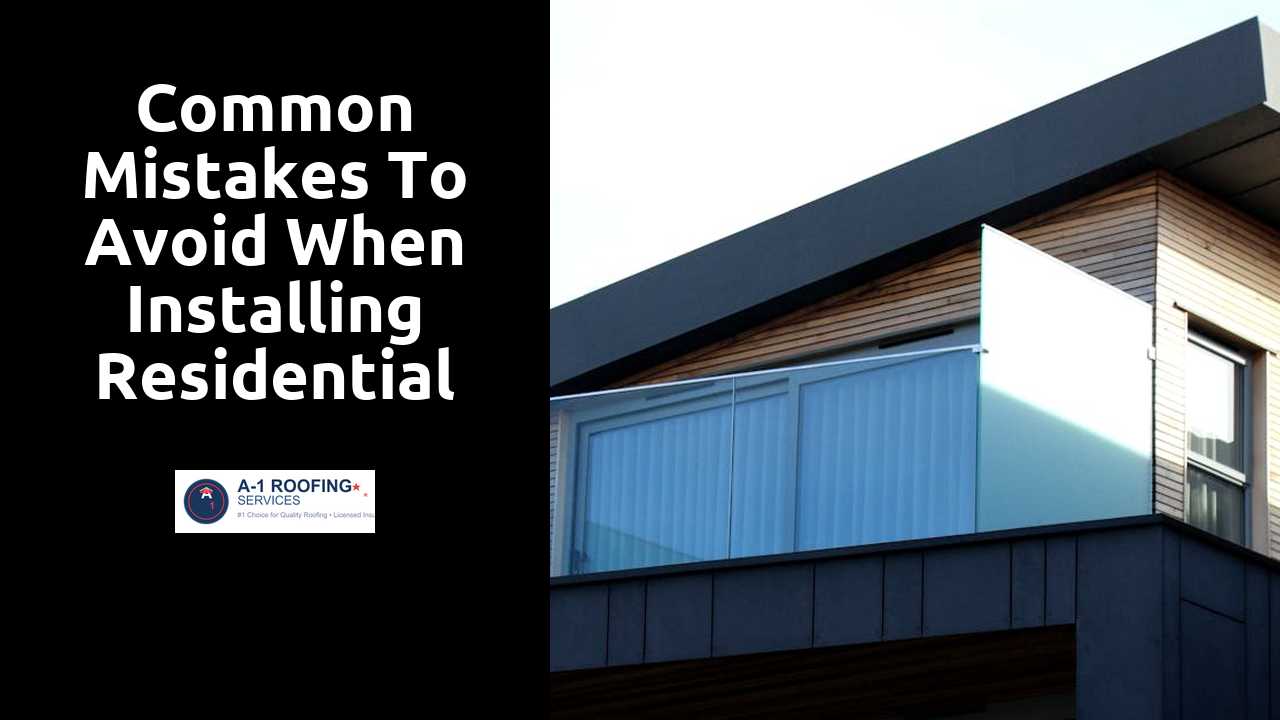
Common Mistakes to Avoid When Installing Residential Roofs
Table Of Contents
Failing to Inspect the Roof Deck
One of the most critical steps in a successful roofing project is a thorough inspection of the roof deck. This component serves as the foundation for all roofing materials and plays a significant role in the overall integrity of the roof. If the deck is compromised due to rot, mold, or structural damage, any new roofing installed will likely suffer from the same issues. Homeowners who overlook this crucial step might find themselves facing unexpected repairs and expenses shortly after installation.
Assessing the condition of the roof deck allows for necessary repairs or reinforcements before proceeding with the installation of shingles or other roofing materials. Inspectors should check for any signs of weakness or deterioration, as these can lead to significant problems down the line. A well-maintained and robust roof deck not only enhances the longevity of the roofing system but also decreases the risk of costly leaks and damage during harsh weather events.
Continue reading this article for more information.
Checking for Damage Before Installation
A thorough inspection of the roof deck is essential before proceeding with any installation. Rotting wood or underlying damage can compromise the integrity of the new roofing materials. Identifying issues upfront reduces the risk of costly repairs later on. Homeowners should evaluate the entire surface area of the roof to pinpoint areas that may require additional attention.
Neglecting to address existing damage can lead to significant headaches down the line. Water leaks or pest infestations often stem from unnoticed problems in the deck. Ensuring that the underlying structure is sound creates a solid foundation for the new roofing system. Taking the time to inspect and repair any issues beforehand can ultimately save time and money.
Not Hiring Professional Help
Many homeowners underestimate the complexities involved in roofing projects. Attempting to undertake these tasks without the expertise of a professional can lead to significant issues down the line. Experienced roofers have extensive training and knowledge about local building codes, material selection, and installation techniques. This expertise helps ensure the job is completed correctly and safely, minimizing the risk of future problems.
Skilled roofers can identify potential issues that an untrained eye might overlook. Their experience allows them to handle unexpected challenges, such as weather delays or structural concerns, efficiently. Hiring a professional also provides peace of mind, as reputable contractors often offer warranties on their workmanship. Investing in professional help may seem like an added expense, but the long-term benefits far outweigh the initial costs associated with hiring experts.
Advantages of Skilled Roofer Expertise
Hiring a skilled roofer brings invaluable expertise to residential roof installations. Professionals possess extensive training and experience in handling various roofing materials and techniques. Their familiarity with local building codes ensures that the installation meets all safety regulations, minimizing the risk of future complications. A well-trained roofer not only mitigates potential errors but can also identify underlying issues that may not be immediately apparent, leading to a more secure and durable roof.
Incorporating the knowledge of an expert can save homeowners from costly mistakes that might arise from DIY attempts or inexperienced contractors. Skilled roofers can efficiently navigate challenges posed by unique architectural features or site-specific conditions. Their access to premium materials and tools enhances the overall quality of the installation. Trusting a professional with the job also allows homeowners peace of mind, knowing that their roof will be installed correctly and is backed by warranties and guarantees.
Incorrectly Installing Flashing
Properly installed flashing is crucial for directing water away from seams and preventing leaks. Many homeowners overlook its importance during roof installation. Common mistakes include using the wrong type of flashing material or applying it inappropriately. For instance, if the flashing is not adequately sealed or is positioned incorrectly, water can infiltrate beneath the roofing materials. This oversight can lead to significant water damage over time, affecting not only the roof but also the underlying structure.
Selecting the right flashing material for the specific roofing system is essential. Factors such as the roof's slope, the materials used, and local weather conditions all play a role in determining the best type of flashing. Inadequate attention to detail in this area can result in costly repairs down the line. Ensuring that flashing fits snugly and overlaps correctly prevents water accumulation that might otherwise lead to leaks and further deterioration of the roof.
Ensuring Proper Flashing for Leak Prevention
Properly installed flashing acts as a barrier against water infiltration. It should be set up in areas where the roof meets walls, chimneys, or any other projections. Using the right materials is crucial; choose durable options that can withstand weather elements. Failure to do so might lead to water pooling and subsequent leaks.
It's essential to ensure that flashing overlaps correctly. The upper piece should overlay the lower one, directing water away from vulnerable areas. Sealing all edges and joints is just as important. Regular inspections after installation help identify any issues before they escalate into more significant problems.
Related Links
Understanding Roof Deck Preparation for InstallationEssential Tools for Home Roof Installation